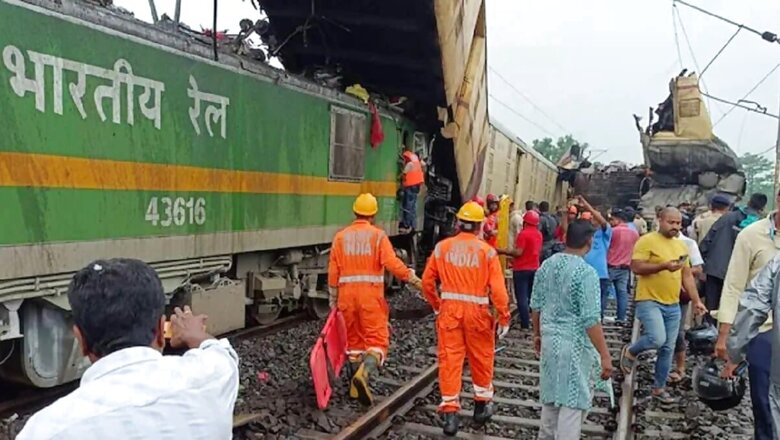
views
The spate of railway track attacks—18 incidents to date since August 2024—suggests an organised network behind them, possibly orchestrated from abroad by masterminds harbouring pathological hatred for India. Providence has thwarted many of these evil designs, thanks to the remarkable vigilance of engine drivers. However, we cannot rely solely on their alertness. Unlike airports, which are thoroughly secured if not hermetically sealed, railway tracks are much harder to protect.
As of August 2024, the total track length of Indian Railways was 132,310 kilometres (82,210 miles). This includes sidings and a line length of 68,584 kilometres (42,616 miles). It is nearly impossible to station a sharpshooting security guard armed with a deadly rifle every inch of the way. CCTV cameras, even if installed, are unlikely to be effective given the speed of trains and the audacious nature of the attacks by scheming thieves and terrorists.
The only viable way to monitor the tracks is from the sky—using satellites. While satellites are currently used for television transmission, weather forecasting, and other purposes, they should also be employed for the country’s security needs. If Google Maps can detect alleged Chinese intrusions into Indian territory and some US states and Washington DC can enforce traffic regulations through satellites, India should also commission them to identify and intercept anti-social elements aiming to sabotage our tracks. Although satellites may not cover the entire track length across the country, the fear of their high-resolution cameras capturing the terrorists and arsonists in the act should be a deterrent enough. Additionally, the Railway Protection Force must be strengthened.
This, in addition to intelligence agencies doing their work unobtrusively, such as intercepting suspicious conversations and emails. Money makes the mare go, so instant and attractive financial rewards for informers must be announced. The placement of unusual and unseemly objects, such as gas cylinders and cement blocks, on railway tracks, is likely to attract the attention of passersby and those living in the vicinity.
Needless to say, such informers must be protected, if necessary, by masking or altering their identities, KGB-style, to prevent them from fearing or facing swift and brutal reprisals. For arsonists and saboteurs, a life sentence will not do. They must face the gallows following a fast-track trial, which incidentally ought to be the punishment for rapists too. Hit-and-run attacks are easy, but thwarting them is infinitely more difficult. Enough of mollycoddling of terrorists, arsonists and saboteurs with legal niceties and human rights concerns.
Today, we are witnessing a spate of track terror, but who knows if our planes and airports might be within the devious and devilish calculations of terror masterminds? After all, the nightmarish and ghoulish images of the Manhattan Twin Towers attack by a suicide flight mission more than two decades ago are still fresh in the minds of people and authorities.
To be sure, flights have become infinitely more secure. Gone are the days when a chirpy and smooth-talking stowaway could board a flight, as happened in Arthur Hailey’s Airport. However, our airports still have vulnerabilities and thus remain susceptible. Once the security check is completed, we tend to believe that everything will be hunky-dory on the airport and flight fronts. We must abandon this smugness and complacency.
There are numerous fancy shops and food courts as one drifts or ambles from security to the boarding gate. The eateries, in particular, offer forks, knives, and steel spoons to their customers, all of which could be whisked away by terrorists. While such fancy shops cannot be closed as they provide strong financial support to the airport authorities, a final check of passengers and their cabin baggage must be conducted, even though it will add to the time taken after a flight is announced. Inside the flight too, danger lurks despite the supposed presence of civilian-clothed marshals on certain routes of specific airlines. Therefore, inflight service should avoid using knives, steel spoons, and forks to prevent their potential weaponization by terrorists masquerading as passengers. Let the fliers make do with plastic cutlery.
The writer is a senior columnist. He tweets @smurlidharan. Views expressed in the above piece are personal and solely those of the author. They do not necessarily reflect News18’s views.


















Comments
0 comment